One day in February 2020, I found myself biking down Clark Drive in Vancouver — a busy, car-heavy arterial road — with a binner named Steve Nelson. We were cycling to a scrap yard to recycle some metal he had picked up. As I scanned the road to make sure a semitruck passed us by safely, Nelson continued chatting to me amicably about the price of steel these days. Riding off the beaten track is something I like to do as a bike mechanic and cycling enthusiast, but I’d never expected to end up cycling down the busiest trucker route in Vancouver. My goal that day was to hang out with Nelson to see how his work took him around the city and learn more about how the city’s infrastructure and policies could better support low-income cyclists.
The whirring of bike gears is familiar background noise in Vancouver. Vintage road bikes, family-friendly cargo bikes and speedy electric bikes are among the range of two- and three-wheelers weaving through Vancouver’s 4,500-kilometre bikeway network. However, some of Vancouver’s cyclists, including those known as “binners” or “recyclers,” because they collect and exchange recyclable materials for money, are more likely to be found riding up an alley — or cycling down Clark Drive — than using the 10th Avenue bike route.
Although the City of Vancouver links cycling to economic, environmental and health-related goals for the city and for residents, research suggests that the health, environmental and economic benefits of urban cycling are most relevant to privileged populations, and that folks with fewer economic resources often bike for other reasons.
Not long before the outbreak of COVID-19 in Vancouver, I interviewed Nelson and four other men who ride bicycles and live in the Downtown Eastside. Mostly, I biked alongside them while we talked.
Bikes as mobility aids
Cycling was a utilitarian part of Nelson’s livelihood as a binner. Two of my other interviewees, Pete and Simon, also used their bikes primarily for binning. Brent and John rode for leisure and transportation. (I am using pseudonyms for Brent, John, Pete and Simon for privacy reasons.)
Nelson, who is awaiting surgery for his heart condition and has tendinitis in his left foot, rode his bike long distances as he gathered recyclable beverage containers and scrap metal. “I can ride my bike a hundred miles a day, but I can only walk a couple blocks before I start crippling up,” he told me.
All five men found cycling easier on their bodies than walking. Cycling also allowed them to get to somewhat remote locations, like back alleys, and carry bulky items, like bags filled with recyclables, which other modes of transportation may not have permitted.
No one I interviewed travelled by bike for environmental reasons. Instead, their bikes helped them get around the city in a way that was convenient and avoided aggravating their health issues.
Municipal policy that recognizes the bicycle’s potential as a mobility aid and emphasizes the usefulness of adapted and electric bikes could benefit many Vancouver residents, including Nelson, Pete, Simon, Brent and John.
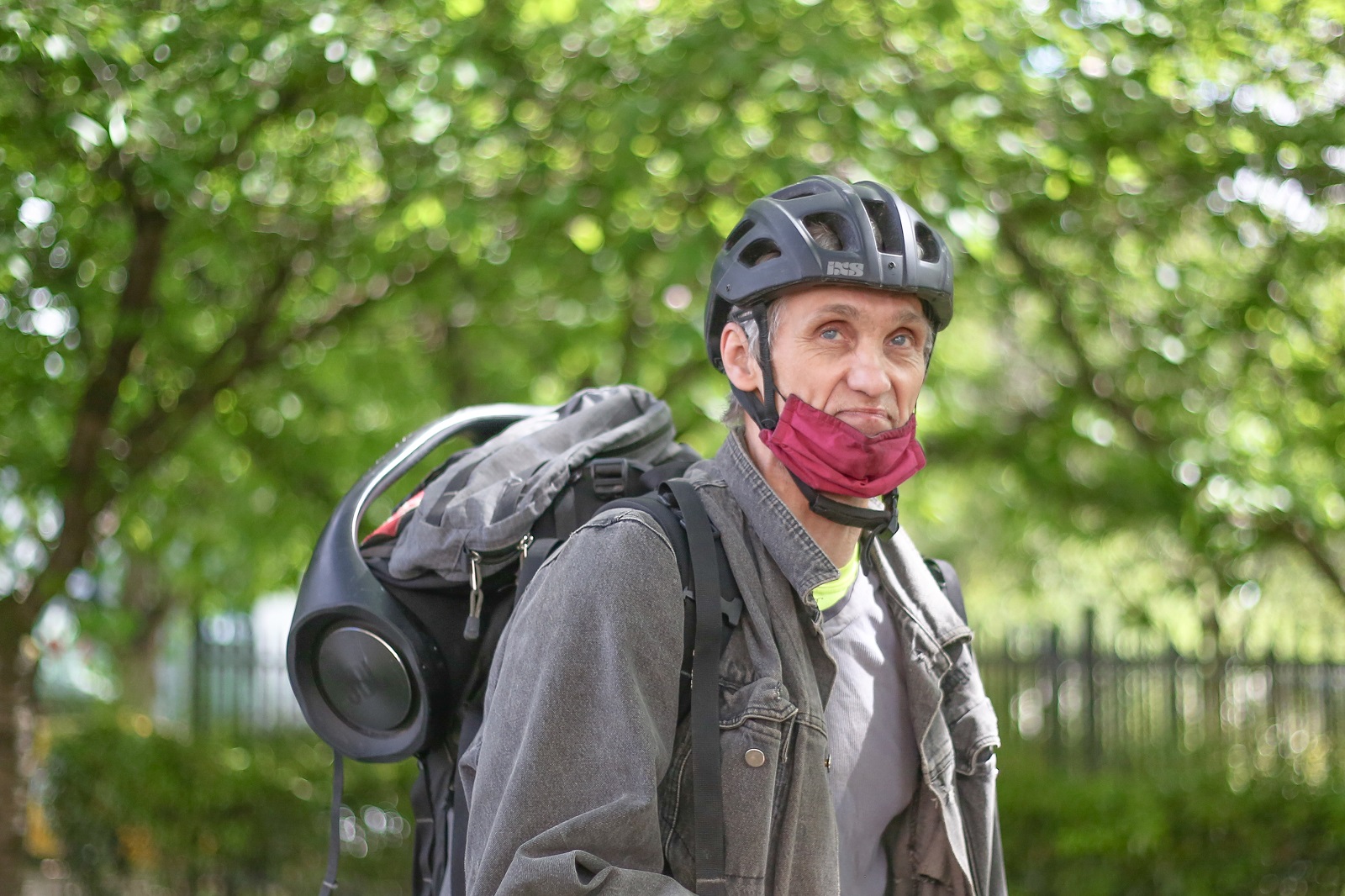
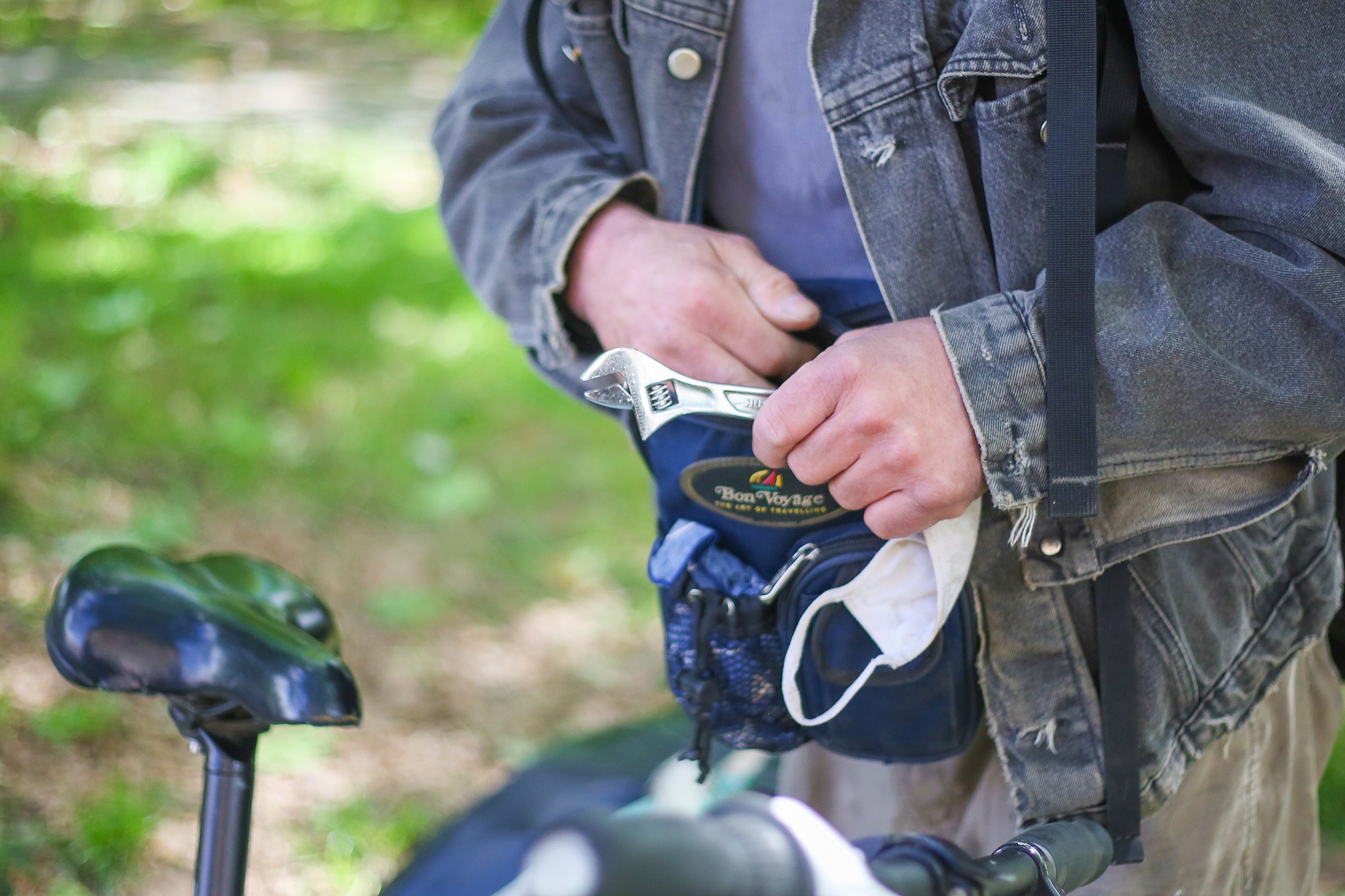
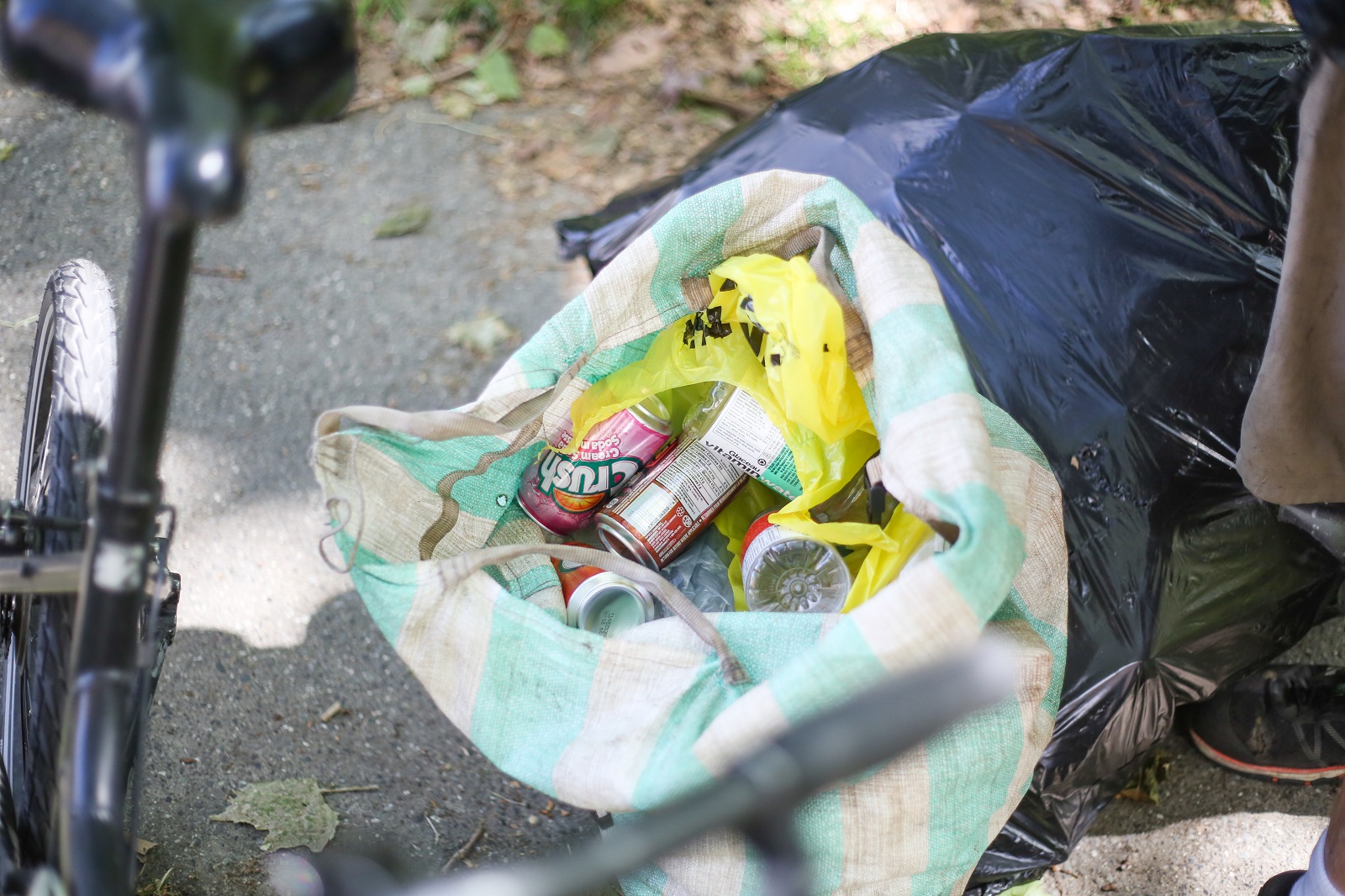
The underground bicycle economy
All five men rely on community bike shops and the Four Directions Trading Post to fix their bikes and purchase new bikes when their old ones are stolen. These shops, and the trading post, are low-cost, low-barrier options, and are all conveniently located in the Downtown Eastside or in East Vancouver. The one commercial bike shop mentioned by John, Super Champion Cycle Shop, is also located in the Downtown Eastside and is known to cater its residents.
A community bike shop offered Pete credit for a new tube, allowing him to pay them back when he was able to. “When you get your cheque, you can square up with them,” he said. “[It] kept me on the road for quite a while.”
Other important places, like businesses, art studios and residences where recyclers travelled to in order to collect recyclables, were located on established routes that Nelson, Pete and Simon called “trap lines.”
Nelson, Pete and Simon tended to visit recycling depots outside of the downtown core that paid higher refunds than others and offered perks like free coffee, heaters and welcoming staff. The perks made the extra distance worth it — but the depots weren’t always conveniently accessible by bike. To get to one bottle depot, Steve and I rode across an overpass on a sidewalk in the wrong direction to avoid hitting a lamppost or riding on a very narrow and busy vehicle lane.
To support binners and low-income cyclists, the city could ensure easy cycling access to the industrial areas where recycling depots are located. The city could also support initiatives to allow cyclists to access low-cost repair bike services wherever they are located.
Verbal harassment and criminalization
Despite riding for long hours and diverting significant amounts of waste from the landfill on a daily basis, Nelson, Pete, Simon and John weren’t praised for their health or environmental efforts. In fact, they were all routinely stigmatized by police and other road users.
Cycling increased their visibility to police officers and the general public and made them targets for harassment. They were often pulled over for relatively minor infractions such as not wearing a helmet, not having lights after dark and cycling on the sidewalk — something the city’s infrastructure often makes necessary on their routes.
Binning also drew negative attention. Steve noted that he was instantly coded as a criminal when he was recycling. “A lot of them, cops and regular people, they instantly think of you as a criminal. Pickin’ up empties? You’re a criminal,” he said.
Other times, it seemed that police simply wanted to make their presence known. Whenever police saw Simon cycling with his yellow rain gear on, he said they pulled up to his bike and called him a “rubber ducky.”
There is work to be done to lessen the stigma around cycling and poverty. The City of Vancouver could include pictures of low-income cyclists and binners on their webpages about cycling, and specifically recognize binners in their cyclogistics plans.
The city could also do away with helmet laws, which have been shown to disproportionately affect lower-income and racialized cyclists — and create a reason for police officers to stop and interact with them.
Supporting all city cyclists
When I checked in this spring with Steve to see how he was doing, and if the pandemic had changed anything for him, he told me binning was booming. “I’ve made 30 bucks some nights in just 15 minutes riding seven blocks home,” he said.
But he’s still facing the same issues — harassment, theft, inconvenient routes — he dealt with before the pandemic.
While putting in more bike lanes won’t solve social inequality, considering the needs of low-income cyclists in Vancouver could be one way for the city to include more people in their active transportation plans.
For the men I interviewed, cycling was connected to their identity, health, income, relationships and housing. Directly including cyclists like them in discussions about Vancouver’s bike-related plans could be one step towards cycling equity.
The city would also do well to acknowledge the connection between cycling and chronic illness and disability. As the population of Vancouver ages, the city should work towards ensuring that people with health issues can move through the city freely, safely and with ease.
If we want to reach our active transportation goals, we’ll need to make sure they suit all of our citizens. ![]()
Read more: Rights + Justice, Transportation, Urban Planning + Architecture



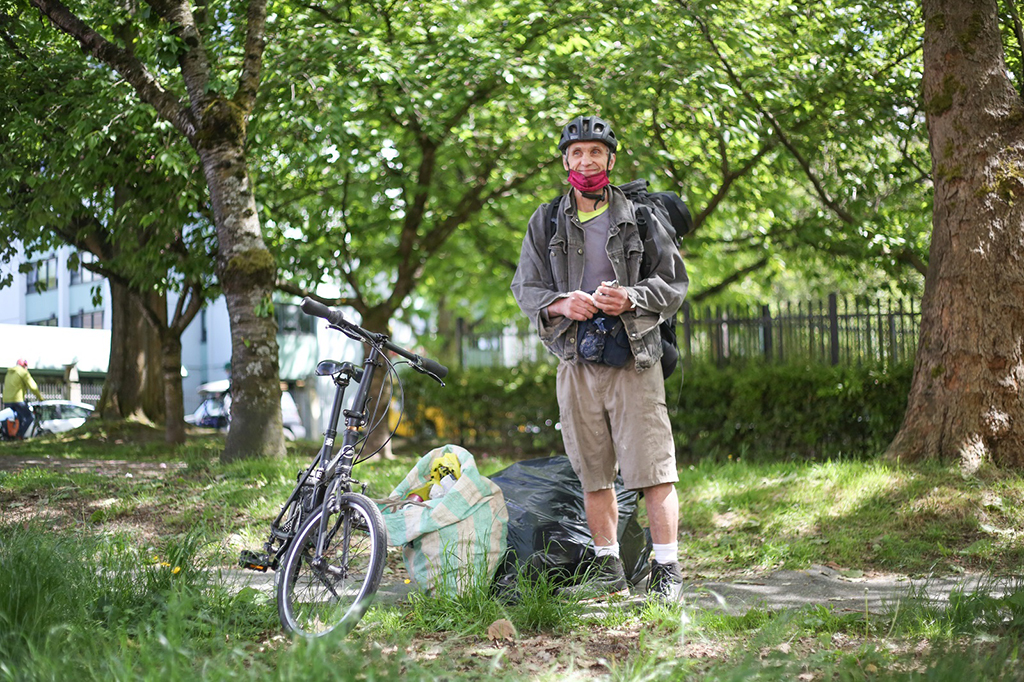

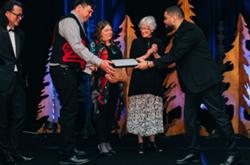










Tyee Commenting Guidelines
Comments that violate guidelines risk being deleted, and violations may result in a temporary or permanent user ban. Maintain the spirit of good conversation to stay in the discussion.
*Please note The Tyee is not a forum for spreading misinformation about COVID-19, denying its existence or minimizing its risk to public health.
Do:
Do not: